Nicholas Moenich is an artist based in Brooklyn, NY. In 2014, Nicholas was a visiting artist at Anderson Ranch, attended the Vermont Studio Center residency program, and participated in a panel discussion and exhibition at the University of Cincinnati entitled Corporeal Texture. Recent projects include: If thats the name wewl do the same: Kristen Jensen + Nicholas Moenich, Harbor Gallery, Brooklyn, NY (2014), Jenal Dolson and Nicholas Moenich, Tempus Projects, Tampa, FL (2014), Regina Rex presents: Cemetarium, Emerson Dorsch, Miami, FL (2014).
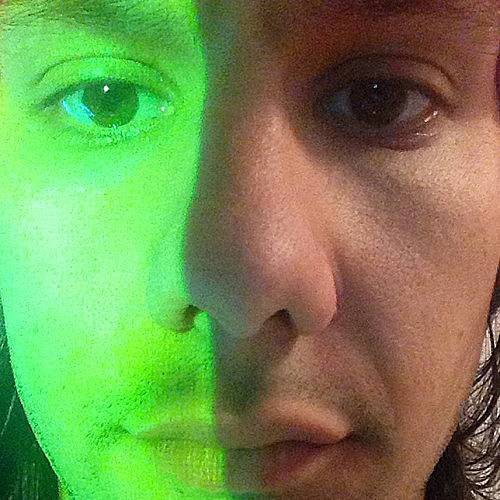 Tell us a little bit about yourself and what you do. I grew up in Cleveland, Ohio. I live in Brooklyn, NY. I studied painting in school and now I am focused on making sculptures. I also draw a lot. At the core of it all, I am interested in the transformation of material.
Tell us a little bit about yourself and what you do. I grew up in Cleveland, Ohio. I live in Brooklyn, NY. I studied painting in school and now I am focused on making sculptures. I also draw a lot. At the core of it all, I am interested in the transformation of material.
How long have you lived in New York City and what brought you there? I have lived in New York City for seven years. I moved here from Cleveland to attend grad school at Hunter College.
 How has living in New York City affected your art practice? I think the city has affected my practice in numerous ways. Through constantly looking at art and engaging with a community, the city has helped me figure out what I really want to make and how best to express myself. Overall, I see New York City as a place that is very convenient. Everything you could ever want — art, film, music, materials, beach, parks, etc. etc. — is seemingly around the corner or a bike or train ride away. I think it becomes easy to forget and take advantage of all the cultural richness that is here. Also another big plus is its ideal geographical location; upstate New York is not far away at all; one can easily be in the woods and climbing the Catskills with bears in just a couple hours. Getting away for a bit can be just as valuable as being here.
How has living in New York City affected your art practice? I think the city has affected my practice in numerous ways. Through constantly looking at art and engaging with a community, the city has helped me figure out what I really want to make and how best to express myself. Overall, I see New York City as a place that is very convenient. Everything you could ever want — art, film, music, materials, beach, parks, etc. etc. — is seemingly around the corner or a bike or train ride away. I think it becomes easy to forget and take advantage of all the cultural richness that is here. Also another big plus is its ideal geographical location; upstate New York is not far away at all; one can easily be in the woods and climbing the Catskills with bears in just a couple hours. Getting away for a bit can be just as valuable as being here.
What artists are you interested in right now? I feel that my work is in a lineage of a certain abstract sculpture, such as the work of Ron Nagle, Ken Price and Vincent Fecteau. Having studied their work, I am interested in developing my own distinct and clear formal language. I look at a lot of contemporary art because of my proximity to it, but I spend a lot of time thinking about my favorite objects and sculptures from the Met — Malakula helmet mask, the Haida Sea Bear Mask, Egyptian coffins, and the Assyrian Gallery to name a few.
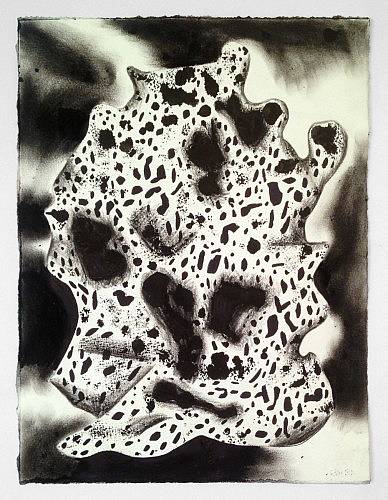 What kinds of things are influencing your work right now? Last summer, I was a visiting artist at Anderson Ranch in Aspen, Colorado. While I was there, I grew a fondness for the magpies that fly all over the place. Many think of them as a pest but I love them. I took many photographs of them in action because there is a reason they are called “Thieving Magpies.” They have a really beautiful coloration. From the magpie bird, I learned that there is a mushroom called the Magpie Inkcap, or more formally, coprinopsis picacea; its Latin name meaning “magpie living on dung.” This mushroom has a black and white patterning that has been very influential on my recent sculptures. I have an interest mushrooms — not just for their magic — but also their mycelium structure and the numerous myths surrounding them. Another influence is the Hopewell Native American mounds in Ohio, such as the Serpent Mound near Cincinnati. Many of these structures are in alignment with the sun and the moon as to form a calendar and may have also been used as a place of ritual and worship. I also have been thinking a lot about this film that was recently released called Hard to be a God by Aleksei German; it is an intense, three black and white hours full of blood, shit and mud. Other constant influences/interests are Batman, fishing, Terence McKenna, cats, and heavy aggressive music.
What kinds of things are influencing your work right now? Last summer, I was a visiting artist at Anderson Ranch in Aspen, Colorado. While I was there, I grew a fondness for the magpies that fly all over the place. Many think of them as a pest but I love them. I took many photographs of them in action because there is a reason they are called “Thieving Magpies.” They have a really beautiful coloration. From the magpie bird, I learned that there is a mushroom called the Magpie Inkcap, or more formally, coprinopsis picacea; its Latin name meaning “magpie living on dung.” This mushroom has a black and white patterning that has been very influential on my recent sculptures. I have an interest mushrooms — not just for their magic — but also their mycelium structure and the numerous myths surrounding them. Another influence is the Hopewell Native American mounds in Ohio, such as the Serpent Mound near Cincinnati. Many of these structures are in alignment with the sun and the moon as to form a calendar and may have also been used as a place of ritual and worship. I also have been thinking a lot about this film that was recently released called Hard to be a God by Aleksei German; it is an intense, three black and white hours full of blood, shit and mud. Other constant influences/interests are Batman, fishing, Terence McKenna, cats, and heavy aggressive music.
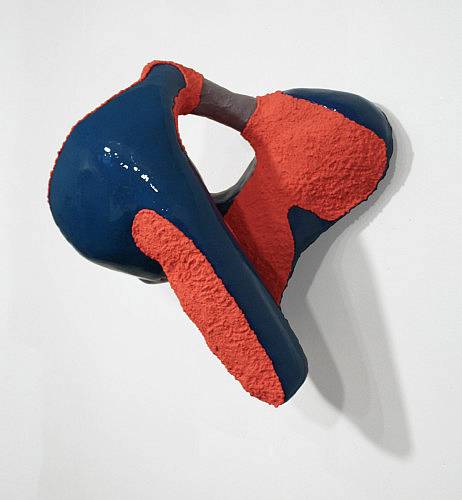 What are you reading right now? I like to read the New Yorker every week. I just read Batman: Year 100. I’m trying to finish Crime and Punishment, which I have never read before. I also started re-reading When Gravity Fails by George Alec Effinger.
What are you reading right now? I like to read the New Yorker every week. I just read Batman: Year 100. I’m trying to finish Crime and Punishment, which I have never read before. I also started re-reading When Gravity Fails by George Alec Effinger.
 Tell us about your work process and how it develops. My process is a slow wrestling of adding and subtracting material in an attempt to make something that I find surprising. My latest sculptures are made with epoxy clay and pigment, and some foam to quicken the pace for larger parts. I work on a handful of pieces at the same time. They usually begin as a scrap of material or remnant of another sculpture that I feel particularly drawn towards, or one fragment gets added to another fragment and this suddenly has a charge or starting point to it. That form then gets reshaped over and over again, adding and subtracting, growing or getting hack down. I want the sculptures to be active and transform from all angles; so as one experiences the piece it slowly feels as if it transforms into something else. The use of the black and white clay not only creates a visual pattern but it also highlights the process of adding or subtracting. I see this as akin as to painting; it shows the accumulation of marks, material and thought. The all-over black and white “Dalmatian-like” pattern offers a graphic quality that is familiar, but makes it harder to comprehend the form overall, and I see this uncanny territory as an interesting psychological space to be in. The sculptures emerge slowly out of the process as I’m looking for a point where I can’t of anything else to do but also as if they feel like they have reached a certain gestalt that could morph at any moment. I think of the sculptures as abstract portraits or creatures and my process as something akin to like a relationship with a cat or a dog, sometimes you roughhouse around with it, other times you are very gentle. My last body of work, which I nicknamed “Fire and Ice,” was made in a similar vein for the forms but with an interest with different types of surface finishes. I thought of those as strange tools or handheld objects hanging on the wall. Also while the sculptures are drying, I like to draw.
Tell us about your work process and how it develops. My process is a slow wrestling of adding and subtracting material in an attempt to make something that I find surprising. My latest sculptures are made with epoxy clay and pigment, and some foam to quicken the pace for larger parts. I work on a handful of pieces at the same time. They usually begin as a scrap of material or remnant of another sculpture that I feel particularly drawn towards, or one fragment gets added to another fragment and this suddenly has a charge or starting point to it. That form then gets reshaped over and over again, adding and subtracting, growing or getting hack down. I want the sculptures to be active and transform from all angles; so as one experiences the piece it slowly feels as if it transforms into something else. The use of the black and white clay not only creates a visual pattern but it also highlights the process of adding or subtracting. I see this as akin as to painting; it shows the accumulation of marks, material and thought. The all-over black and white “Dalmatian-like” pattern offers a graphic quality that is familiar, but makes it harder to comprehend the form overall, and I see this uncanny territory as an interesting psychological space to be in. The sculptures emerge slowly out of the process as I’m looking for a point where I can’t of anything else to do but also as if they feel like they have reached a certain gestalt that could morph at any moment. I think of the sculptures as abstract portraits or creatures and my process as something akin to like a relationship with a cat or a dog, sometimes you roughhouse around with it, other times you are very gentle. My last body of work, which I nicknamed “Fire and Ice,” was made in a similar vein for the forms but with an interest with different types of surface finishes. I thought of those as strange tools or handheld objects hanging on the wall. Also while the sculptures are drying, I like to draw.
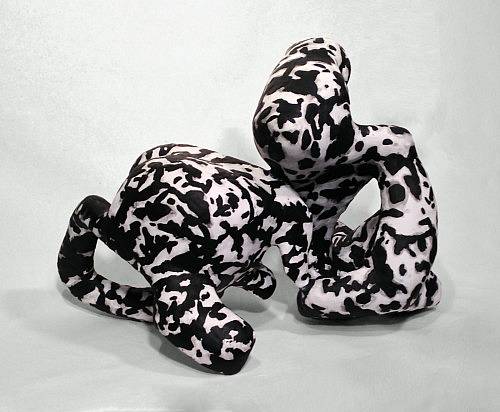 What do you want a viewer to walk away with after seeing your work? Ideally, I don’t want the viewer to just walk away after seeing it. I hope the sculpture would trap the viewer into fully experiencing the object as he or she walks around it. I want the viewer to enter into a certain psychological relationship with the piece that questions the nature of experience — how do I experience the sculpture? How does the sculpture experience me?
What do you want a viewer to walk away with after seeing your work? Ideally, I don’t want the viewer to just walk away after seeing it. I hope the sculpture would trap the viewer into fully experiencing the object as he or she walks around it. I want the viewer to enter into a certain psychological relationship with the piece that questions the nature of experience — how do I experience the sculpture? How does the sculpture experience me?
What’s your absolute favorite place in the world to be? Every since I was about 11 years old, every July I go on fishing trips with Dad and brother way up into Ontario, Canada, like into the Arctic watershed. It is a 24-hour drive from Cleveland, OH to a little tiny town called Pickle Lake then take a 50 mile pontoon plane ride that drops us off on a lake all to ourselves to do nothing but fish for a week. It’s incredibly peaceful and beautiful.
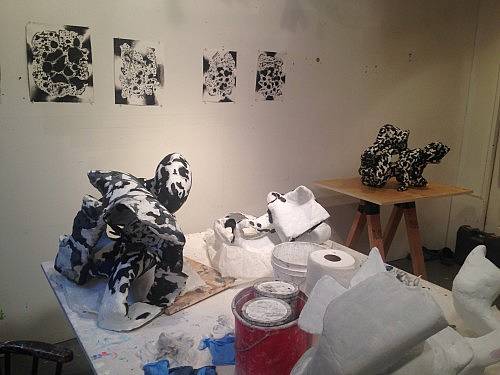 Describe your current studio or workspace. “Land of Some Other Order”
Describe your current studio or workspace. “Land of Some Other Order”
